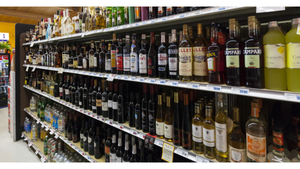RESOURCES, TECHNIQUES FOR IN-STORE DEMOS ARE ANALYZED
NEW YORK -- In-store demos don't have to be complicated or extensive affairs to generate sales, said demo program veterans at a seminar during the Fancy Food Show at the Jacob Javits Convention Center here July 11 to 14.The panel, moderated by Ann Brody, founder of Ann Brody Enterprises, Bethesda, Md., included Cathy Cochran-Lewis, manager of the food education demonstration program and cooking school
July 26, 1999
ROBERT VOSBURGH
NEW YORK -- In-store demos don't have to be complicated or extensive affairs to generate sales, said demo program veterans at a seminar during the Fancy Food Show at the Jacob Javits Convention Center here July 11 to 14.
The panel, moderated by Ann Brody, founder of Ann Brody Enterprises, Bethesda, Md., included Cathy Cochran-Lewis, manager of the food education demonstration program and cooking school for H. E. Butt Grocery Co. Central Market, Austin, Texas; Claire Criscuolo, co-founder and owner of Claire's Corner Copia, New Haven, Conn.; and Caroline Zimmerman, president of FoodTemps, North Bethesda, Md.
"If you demo products, they will sell themselves," said Cochran-Lewis, who joined Central Market in 1996.
With more than 400 olive oils, 750 cheeses and 60 varieties of sausage available in H-E-B's two-store specialty-food division, Cochran-Lewis noted that demos are most effective when they educate customers about the attributes of each item.
"When you have all of these products -- thousands and thousands of products that people have never seen before -- there's just no better way to get the word out than to have them taste it," she said.
According to Cochran-Lewis, demos can increase one-day sales of featured items anywhere from 50% to 500%.
One associate who specializes in demoing sausages at Central Market "increases sales sometimes 150% by doing the demo," she said.
At the stores, the demo team currently consists of four people. So, demo programs in general do not have to be a complicated endeavor requiring a huge staff, she added.
Rather, a successful demo works because retailers devote time to planning, publicity and training.
There are plenty of free resources for ideas, said panel members. Demos can be tied to seasons, holidays or official proclamations such as "National Nutrition Month." Reference libraries and trade associations are storehouses of such data in particular, said Criscuolo, who uses demos to acquaint people with the ingredients served in her vegetarian restaurant.
Calendars are a great way to publicize the events. They should be posted everywhere and used as bag stuffers. They should be mailed to customers and local media outlets, including schools. Make sure they include the store's name and other information on them. Including the name of a specific contact person adds a personal touch that creates a sense of customer loyalty, she added.
Keep everyone in-store apprised of the schedule. At Criscuolo's restaurant, a three-ring binder containing the demo timetable is placed next to the time clock. This sharing of information helps to motivate staff, she said.
"Start the process by assigning one person to coordinate the whole event," said Criscuolo. "Get someone who's not in management, who is out on the floor interacting with customers."
It's also wise to assign an understudy, someone who can take over if the primary organizer is unable to fulfill his or her duties, she said.
Effective use of staff can be the key to profiting from demos. Criscuolo and the others stressed that associates chosen for the role are ideally gregarious and food lovers. Yet, they must also be sharp promoters who focus on the sell.
"Studies show that you have about one minute to convince a customer and make a sell," said Zimmerman of FoodTemps, one of the nation's largest demo agencies. Therefore, staffers need to develop a "short and sweet" pitch. Role playing and practice are essential.
The direct sell should include the name, qualities that differentiate it from competing products and the price, she added.
The pitch is delivered several different ways at Central Market. According to Cochran-Lewis, the tabletop may be the most popular in general, but Central Market has adopted others that maximize the experience:
One-on-One, where a produce associate stocking apples might arbitralily slice one and offer samples to passing shoppers.
Foodies, the retailer's term for uniformed shopping "guides" who escort shoppers looking for specific items. They have the authority to open packages. "Some customers make appointments with our Foodies," said Cochran-Lewis.
Butlers, who approach shoppers with sample-laden trays.
Kids clubs, with day and evening activities where children can try kid-friendly foods like cheese or salami. "Get them engaged in food and the parents will follow," Cochran-Lewis observed.
Cooking School, with more than 35 classes taught by visiting chefs and cookbook authors every month. "There's no greater demo -- you have a captive audience for two-and-a-half hours and they're paying to be there," said Cochran-Lewis.
"Tuesday Tastings" events, held from 2 p.m. to 8 p.m. These samplings are comparative tastings of five or six different products from the same category. This method highlights the interactive element because the retailer then asks the customers to choose, by ballot, their favorite variety. The results are posted on Central Market's Web site and in-store.
Food fairs, which are an annual highlight. During an event in January, celebrating Central Market's fifth anniversary, there were 25 demos a day for four days, all backed by a multimedia advertising campaign.
The simplest method -- the tabletop demo -- still requires some expertise, said the panelists. Zimmerman of Foodtemps said that the ideal tabletop display reflects a "sell-first, sample-last" philosophy. Packaged product should be placed in front and adjacent to the table for easy access. The actual samples should be kept further back on the table as a way to control "hit-and-run" samplers who don't stick around for the spiel.
Another way to discourage the "free-lunch" crowd is to sample the featured item with a complementary product that requires some time to prepare and present. In the mock demo station set up for the seminar, chocolate biscotti samples were offered with coffee. Pouring and preparing the beverage allowed her more time to sell the biscotti by further "stalling" the shopper.
These ancillary items are ideal for cross-promotional samplings as well. The panelists urged retailers to pair foods whenever possible.
"Don't think single focus," said Criscuolo. "You want to always think of the big picture."
For example, if demoing pesto, don't serve it on a cracker. Take the extra time to incorporate a pasta to serve it on, or with an artisan bread or rice. The customer will likely purchase both items as a result, she said.
Here, manufacturers can be a big help. Criscuolo and the others advised retailers to plan at least three months in advance of any demo. This provides a greater opportunity for operators to negotiate fees, incentives and product donations with manufacturers, brokers and distributors.
"I meet reps a lot when I travel and very often they say, 'I wish more stores would call me. We have the budget,' " said Criscuolo.
When and where to demo in-store depends on the product and goal of the event. Most often demos are held on weekends in high-traffic locations. Zimmerman of FoodTemps stressed that keeping the product visible is critical to success.
"If your product is sold in the back of the store, move it up front," she said. "Put it somewhere where it will be visible."
Likewise, the demo person should be attired in some sort of uniform that will set him or her apart from other employees. It can be as simple as a striped apron.
Some products and presentations lend themselves to off-peak times. Central Market found that the best way to showcase its 75-foot seafood counter was on weekdays. There, a full-time demonstrator cooked seafood during the slower midday period, when customers could engage in more extended discussions of cooking techniques and recipes. Likewise, the demonstrator had more time to upsell the department and its selection.
Whatever the time of day, avoid stationing a demo near exit or express lanes where shoppers are ready for the checkout; midway in an aisle where traffic is less; and anywhere that stops traffic or otherwise causes frustration.
Displays should be large and well-stocked with packaged product to take away, along with recipes, coupons and other customer incentives, many of which can be negotiated with manufacturers. The theme of the demo can promote entire departments or the store if decorative elements are expanded from the demo area.
At Central Market, there are three basic types of demos, according to Cochran-Lewis. Some events are truly in-house, promoting Central Market products with store staff. "This is where we toot our own horn," she said.
Others are vendor-paid and staffed by the Central Market demo team. The rest are completely vendor-repped.
"We love vendor demos," said Cochran-Lewis. "But one of the requirements is that the person doing the demo be intricately involved in the company at some level."
About the Author
You May Also Like




